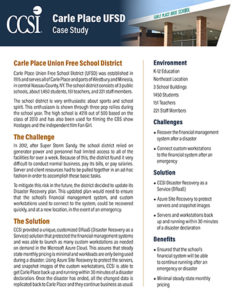Disaster Recovery as a Service – Failover and/or Recovery
While Backup as a Service (BaaS) is prevalent in both the Consumer and Business world, Disaster Recovery as a Service (DRaaS) is geared mostly towards the Business world. What needs to be understood is that DRaaS is not the same as BaaS. In addition, DRaaS is not necessarily a solution for all type(s) of businesses. While BaaS will let you recover specific files, including ‘Bare Metal’ copies of the OS back to the originating machine in case of disaster, this does not help your business if your local infrastructure is offline or damaged. This is where assessment of your DR requirements to be reviewed. How long can your business run without Server or Application access? How long can it run without a network? How much are you willing to spend in order to have this environment available at a moment’s notice? Once this need and the budget is determined, then the research will need to begin.
Legacy Recovery Environments
Disaster Recovery and its planning in the past involved having to provide and pay for secondary physical location. This location would have to have the infrastructure available to bring up physical servers with the latest state of the OS and Applications in use and available for testing. Along with the physical location for the server(s), you also needed a physical location to conceivably test that had workstations ready to go when needed. For testing purposes, backups would be restored to these servers while employees with knowledge of the software being tested were sent to the location where these workstations resided. This was an extremely cumbersome task.
Virtualized Environments
Let’s skip ahead to more recent years. With the advancement in Virtualization and SAN technologies, the ‘restoration’ of backup data may have played a different role and may not have been involved. In a Virtualized environment, ‘failover’ is a better statement than recovery because there may not have been any ‘recovery’ of data, just the environment as a whole. You also still had to maintain a backup and recovery system if there were any bare metal server(s) in place. VM’s along with data stored on SAN’s though can be replicated fairly efficiently to this secondary site with almost instant recovery or failover in case of a disaster. Let’s not forget, you will not only need this secondary site but you will still have the expenditure for the site and equipment in case of failure. You also still may need a site for client testing purposes as well.
DRaaS
At present, with more and more cloud services now widely available, DRaaS can reduce the time and cost for failover. Instead of having the expenditure of secondary equipment and the possibility of multiple DR sites, your DR site is now in the Cloud. As with most Cloud services, you pay for what you use and need. These resources do not always have to be active and testing can be done virtually from any location. In choosing a DRaaS solution, there should be some flexibility with what can be recovered. Single applications or all of the infrastructure required for your business to run should be serviced there as well. Software Vendors such as Veeam, Unitrends, and even Microsoft can provide DRaaS solutions that should be able to fit your needs. With these type of solutions in place, the recovery site could be in the public cloud like AWS, and Azure, or even a private cloud like Webair.
Careful Planning
One thing to remember though, is that DRaaS alone my not cover all forms of ‘disaster’. DRaaS should also be used in conjunction with some type of Backup system be it BaaS, or some other method. If bare metal systems are still in place, DRaaS may not cover these assets seamlessly to the secondary site. Files destroyed/encrypted from Ransomware or accidental file deletion may not be able to be recovered by DRaaS as well. Careful review of your cloud billing structure should also be reviewed. Remember, the goal of DRaaS is to allow for fairly transparent failover of your complete infrastructure to the cloud to keep your business up and running in case of a disaster.
Check out this use case where CCSI provided a unique, customized DRaaS (Disaster Recovery as a Service) solution that protected the financial management systems of Carle Place UFSD and was able to launch as many custom workstations as needed on demand.
Author Bio: Steven Rainess is a Solutions Architect for CCSI. He has 25 plus years experience in the IT industry. For most of these years he has been a consultant as a Subject Matter Expert in Systems, and Networking area, as well as, some Project Management and Development work. His work has covered many verticals including Financial, Education, Broadcasting, and Software Development.
The post Disaster Recovery as a Service – Failover and/or Recovery appeared first on CCSI.
*** This is a Security Bloggers Network syndicated blog from CCSI authored by Steven Rainess. Read the original post at: https://www.ccsinet.com/blog/disaster-recovery-service/






